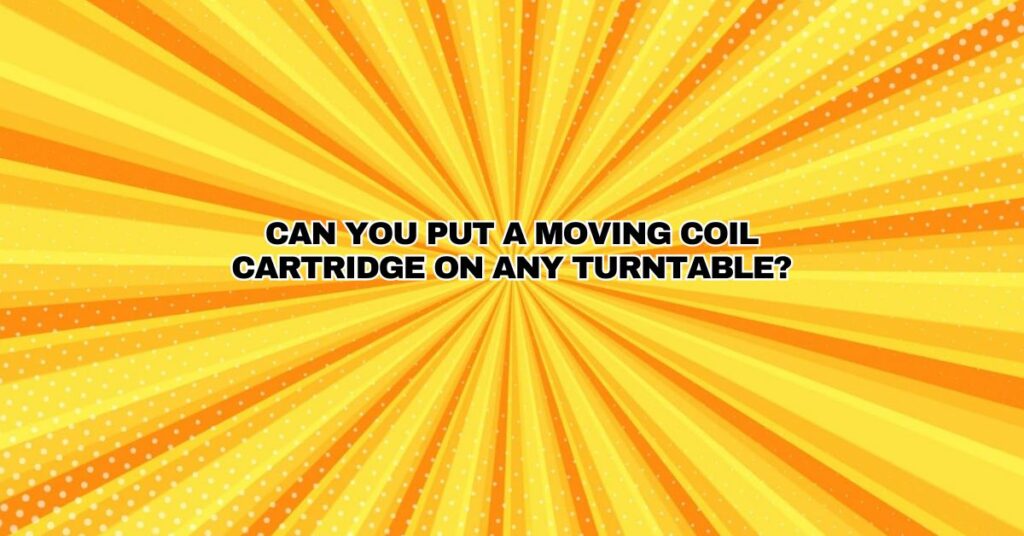Moving coil (MC) phono cartridges are highly regarded for their ability to deliver exceptional audio quality and detailed sound reproduction when playing vinyl records. However, when it comes to using an MC cartridge, there are specific considerations and compatibility factors to keep in mind. In this article, we’ll explore whether you can put an MC cartridge on any turntable and discuss the important factors that affect compatibility.
1. Mounting Type:
One of the key compatibility factors when using an MC cartridge is the mounting type. MC cartridges typically come in two main mounting configurations:
- Standard Mount (also known as ½” Mount): These cartridges have two screws at a standard ½” (12.7 mm) distance between them. Many turntables are equipped with headshells and tonearms that can accommodate standard mount cartridges. If your turntable is designed to accept ½” mount cartridges, you can put an MC cartridge on it.
- P-Mount (T4P): P-Mount cartridges are designed for turntables that use the Plug-and-Play (T4P) system. These cartridges have a single screw and are meant for use with turntables that have fixed tonearms. If your turntable uses the P-Mount system, you will need to use a P-Mount MC cartridge or an adapter to use a standard mount MC cartridge.
2. Cartridge Weight:
MC cartridges often have a lower moving mass than moving magnet (MM) cartridges. This means they are lighter and more delicate. Some turntables may have tonearms that are not designed to handle the lower tracking force and weight of an MC cartridge. It’s essential to ensure that your turntable’s tonearm can support the weight and tracking force required by your chosen MC cartridge.
3. Tonearm Compatibility:
The compatibility of your turntable’s tonearm with an MC cartridge is a critical consideration. MC cartridges require tonearms with a low effective mass, which means they should be lightweight and responsive to accurately track the grooves of vinyl records. High-mass tonearms can be unsuitable for MC cartridges and may lead to tracking issues.
4. Phono Preamp (Phono Stage):
MC cartridges produce a lower output voltage compared to MM cartridges. Therefore, you need a phono preamp (phono stage) that can provide the necessary gain to bring the MC cartridge’s signal up to the line level for amplification. Many turntables have a built-in phono preamp, but some may not offer sufficient gain for MC cartridges. In such cases, an external phono preamp capable of handling MC cartridges is necessary.
5. Impedance and Loading Settings:
MC cartridges may have specific impedance and loading requirements that need to be adjusted to match the cartridge’s characteristics. Some MC cartridges offer user-adjustable impedance and loading settings, allowing you to fine-tune their performance. Ensure that your phono preamp or integrated amplifier supports these settings if needed.
6. Professional Installation:
Due to the precision required for setup and alignment, many audiophiles choose to have their MC cartridges professionally installed or set up by knowledgeable dealers. This ensures that the cartridge is correctly aligned, tracking force is set accurately, and the system operates optimally.
In summary, while you can put an MC cartridge on many turntables, several compatibility factors and considerations should be evaluated. These include the mounting type, cartridge weight, tonearm compatibility, phono preamp capabilities, impedance and loading settings, and professional installation for precise setup. It’s essential to understand your turntable’s specifications and capabilities and choose an MC cartridge that complements your setup. By paying attention to these factors, you can enjoy the exceptional sound quality that MC cartridges are known for on your turntable


